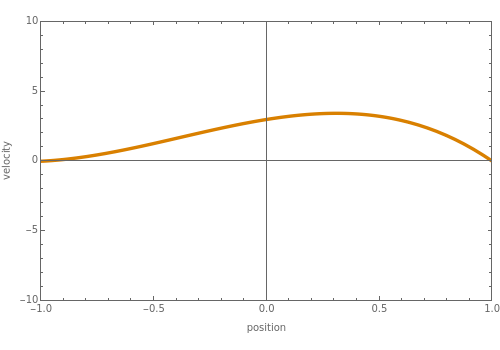Flow in a Vertical Channel with Walls at Different Temperatures
Flow in a Vertical Channel with Walls at Different Temperatures
Consider a vertical parallel-plate channel of width with walls at different temperatures and , >. Two cases are studied: (1) pure free convection (i.e., the channel is closed at both ends and there is no net flow); and (2) mixed free and forced convection (a pressure gradient is present). The velocity (solution of the momentum equation) is given by
2H
T
1
T
2
T
2
T
1
v
x
gβ(-)
T
2
T
m
2
H
6ν
3
η
2
H
3
1
μ
d
dx
2
η
where is gravitational acceleration, is the thermal expansion coefficient, == is the reference temperature taken equal to the mean temperature, is the kinematic viscosity, is the dynamic viscosity, is the pressure gradient, and is the dimensionless position.
g
β
T
0
T
m
(+)
T
1
T
2
2
ν
μ
d
dx
η=
y
H
The velocity can be expressed as =η-+U1-, where is the mean velocity and = is the maximum velocity when the pressure gradient is zero.
v
x
3
2
3
v
0
3
η
2
η
U=-
2
H
3
1
μ
d
dx
v
0
gβ(-)
T
2
T
1
2
H
18
3
νIf and ≠, one recovers pure free convection. When =, the velocity profile is the expected parabolic profile corresponding to a Poiseuille flow. In general, mixed free and forced convection is observed.
U=0
T
2
T
1
T
2
T
1
